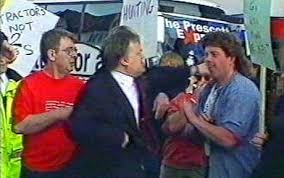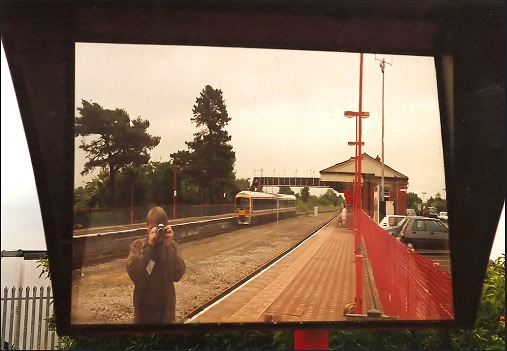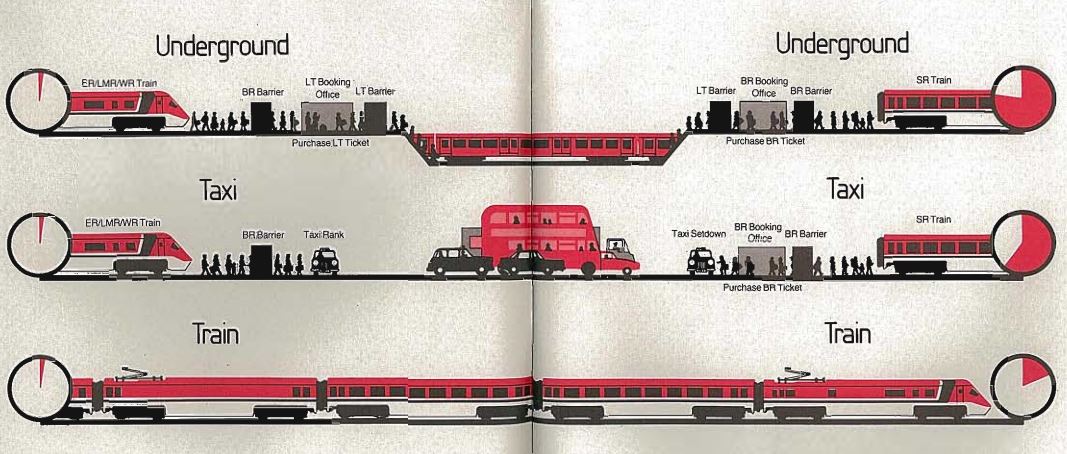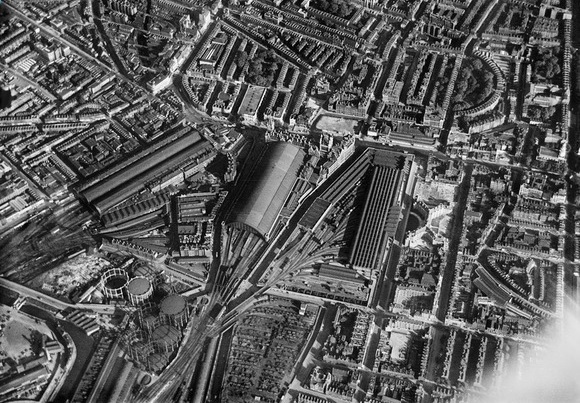2001-9/11
Devvy
Donor
2001 - The Aftermath of the Terror Attacks
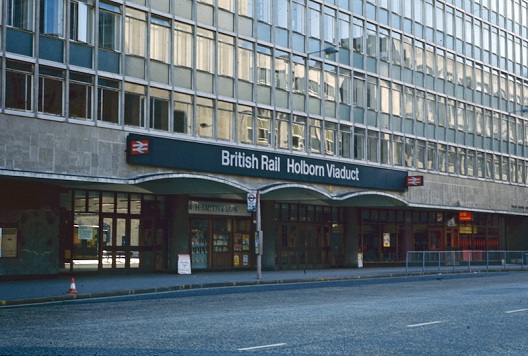
Is Holborn Viaduct on it's last legs?
On the 11th September, a massive terror attack was inflicted upon the United States, and New York City in particular. Thousands of people died on the planes and in the World Trade Centre buildings, and the consequences of the attack, and later attempted attacks, are still felt today.
The entire air travel market was shut down in the US for a couple of days, causing chaos in UK airports - and Britannia Airport in particular, being the de facto UK hub for transcontinental flights, as well as the forefront European hub for transatlantic flights. The UK Government's reaction was to also ban all flights over London - which did not cause too much issue due to the geographic arrangement of runways at Britannia and Gatwick airports, but did cause the business focussed Docklands Airport in London to close. However, the stringent airport security checks rapidly put in place caused chaos; a 3-hour checkin was to be expected in the days following the attack, with airports and security systems unprepared for the far larger security regime they were now required to implement (*1).
The economic impact of this was severe. Reservation providers noted that bookings declined by approximately 25% due to people's fear of flying now, or put off by the new security measures. The impact of the security measures now in place also affected domestic and European flights to & from the United Kingdom, causing consequences wide and far. For British Rail though, it meant yet another sharp upturn in passengers, especially on Pullman services from the northern English cities to London. These were shorter routes, and rail had many advantages, although the airport-to-airport flight time was always going to be shorter by plane, the access time to the airport added significant time overheads. However, with check-in times also rising, and more restrictions on carry-on baggage, many business people switched to Pullman services, and airlines gradually retreated from offering services from Manchester, Liverpool or Leeds airports (*2) to the London airports; there was no economic reason to continue on these routes, and airline opinion turned to "working with British Rail, rather than competing against it".
Likewise, British Rail - or rather the Intercity sector, saw new possibilities for enhancing the "Pullman Premium". The reserved seat nature of the train, gave the opportunity for tracking and rewarding frequent travellers better, as well as providing more cross-bookings from the airline industry. Following in the footsteps of SNCF and Eurostar in the 1990s, Intercity signed up to link in to the Amadeus ticketing platform, used by a wide array of European airlines as well as other SNCF & Eurostar (*3). Whilst full integration was impossible, due to the requirement to maintain cross-ticket compatibility with the legacy British Rail network, the better integrated interface meant that airlines could offer and book seats on Pullman trains from their networks. This would allow air passengers to book a flight from an airport (usually Britannia airport) and include the Pullman train ticket to get there - this would also require the major Pullman stations receiving a new IATA destination code (*4). The long term effect of this would be the de facto adopting of Pullman as a feeder airline by some of the major airlines using Britannia Airport as a hub (predominately the British Airways / KLM / American Airlines tie-up (*5) ). Ideas of providing baggage travel quickly foundered on the problem of providing customs checks on those entering the country (*6), with domestic Pullman stations having no provision for conducting such checks away from the airport for arriving passengers.
The downturn in air travel, and upswing in rail travel also exposed one of the major issues in London's travel network; that of Holborn Viaduct station. The primary international rail gateway for London was caught out by the upswing in passengers, and woefully under resourced for the volume of passengers trying to pass through the constrained site. Despite the European Union's customs union eliminating the need for customs checks, the position of the United Kingdom (and Ireland) outside of the Schengen Agreement meant that full identification checks were required for departing passengers, and this was a major issue with such large capacity trains departing, with room for passengers waiting after the check, but before train boarding, required. With passengers on the London to Paris route continuing to slowly (and now quicker) transition from plane to train, the station was widely considered out-of-date, ill-equipped, and no longer suitable for business. The search was on for a new solution for the international passenger trains to & from London (*7).
------------------------------
Notes: Always dislike writing about tragedy, particularly when it's so real and such a major loss. But it does also have a major impact on British Rail.
(*1) Most of these impacts are OTL, got from reading BBC News archives.
(*2) Manchester & Leeds especially can get to London in approx 2 hours, and Britannia Airport in approx 1:30. Scousers add 20-25 mins or so.
(*3) As per OTL.
(*4) Some stations have an IATA code in OTL; it's a bit patchy and random though. Here, Euston, Nottingham, Sheffield, Manchester, Liverpool, Wakefield and Leeds will all get IATA codes for transfers. I'd imagine most Britannia<->Euston passengers using Network South East services though to get to London, as Pullman aren't going to want their trains filled with airport passengers, preventing passengers from more profitable northern cities, from using the train to London. So Britannia<->Euston Pullman tickets will likely have a healthy premium on, and airlines able to book an open & unreserved NSE ticket for transfer to London if they want (also gives the passengers more flexibility over which train they get if they want a post-flight coffee!).
(*5) One of the spinoffs, as I find the envisaged merger between BA and KLM from 2000 intriguing, and a far better fit than the OTL BA/Iberia.
(*6) Obviously any passengers arriving at Britannia from outside the EU needs to go through customs, and not many passengers are going to want to claim their bag, pass through customs, then check their bag back in for the train ride. That's my view anyway. In Germany, baggage services are offered for departing passengers, but that still requires airline checkin at stations, and the secure conveyance of baggage; is it really worth it for Pullman. At least at the moment, my view would be no.
(*7) *Cough*, bye bye Holborn.

Is Holborn Viaduct on it's last legs?
On the 11th September, a massive terror attack was inflicted upon the United States, and New York City in particular. Thousands of people died on the planes and in the World Trade Centre buildings, and the consequences of the attack, and later attempted attacks, are still felt today.
The entire air travel market was shut down in the US for a couple of days, causing chaos in UK airports - and Britannia Airport in particular, being the de facto UK hub for transcontinental flights, as well as the forefront European hub for transatlantic flights. The UK Government's reaction was to also ban all flights over London - which did not cause too much issue due to the geographic arrangement of runways at Britannia and Gatwick airports, but did cause the business focussed Docklands Airport in London to close. However, the stringent airport security checks rapidly put in place caused chaos; a 3-hour checkin was to be expected in the days following the attack, with airports and security systems unprepared for the far larger security regime they were now required to implement (*1).
The economic impact of this was severe. Reservation providers noted that bookings declined by approximately 25% due to people's fear of flying now, or put off by the new security measures. The impact of the security measures now in place also affected domestic and European flights to & from the United Kingdom, causing consequences wide and far. For British Rail though, it meant yet another sharp upturn in passengers, especially on Pullman services from the northern English cities to London. These were shorter routes, and rail had many advantages, although the airport-to-airport flight time was always going to be shorter by plane, the access time to the airport added significant time overheads. However, with check-in times also rising, and more restrictions on carry-on baggage, many business people switched to Pullman services, and airlines gradually retreated from offering services from Manchester, Liverpool or Leeds airports (*2) to the London airports; there was no economic reason to continue on these routes, and airline opinion turned to "working with British Rail, rather than competing against it".
Likewise, British Rail - or rather the Intercity sector, saw new possibilities for enhancing the "Pullman Premium". The reserved seat nature of the train, gave the opportunity for tracking and rewarding frequent travellers better, as well as providing more cross-bookings from the airline industry. Following in the footsteps of SNCF and Eurostar in the 1990s, Intercity signed up to link in to the Amadeus ticketing platform, used by a wide array of European airlines as well as other SNCF & Eurostar (*3). Whilst full integration was impossible, due to the requirement to maintain cross-ticket compatibility with the legacy British Rail network, the better integrated interface meant that airlines could offer and book seats on Pullman trains from their networks. This would allow air passengers to book a flight from an airport (usually Britannia airport) and include the Pullman train ticket to get there - this would also require the major Pullman stations receiving a new IATA destination code (*4). The long term effect of this would be the de facto adopting of Pullman as a feeder airline by some of the major airlines using Britannia Airport as a hub (predominately the British Airways / KLM / American Airlines tie-up (*5) ). Ideas of providing baggage travel quickly foundered on the problem of providing customs checks on those entering the country (*6), with domestic Pullman stations having no provision for conducting such checks away from the airport for arriving passengers.
The downturn in air travel, and upswing in rail travel also exposed one of the major issues in London's travel network; that of Holborn Viaduct station. The primary international rail gateway for London was caught out by the upswing in passengers, and woefully under resourced for the volume of passengers trying to pass through the constrained site. Despite the European Union's customs union eliminating the need for customs checks, the position of the United Kingdom (and Ireland) outside of the Schengen Agreement meant that full identification checks were required for departing passengers, and this was a major issue with such large capacity trains departing, with room for passengers waiting after the check, but before train boarding, required. With passengers on the London to Paris route continuing to slowly (and now quicker) transition from plane to train, the station was widely considered out-of-date, ill-equipped, and no longer suitable for business. The search was on for a new solution for the international passenger trains to & from London (*7).
------------------------------
Notes: Always dislike writing about tragedy, particularly when it's so real and such a major loss. But it does also have a major impact on British Rail.
(*1) Most of these impacts are OTL, got from reading BBC News archives.
(*2) Manchester & Leeds especially can get to London in approx 2 hours, and Britannia Airport in approx 1:30. Scousers add 20-25 mins or so.
(*3) As per OTL.
(*4) Some stations have an IATA code in OTL; it's a bit patchy and random though. Here, Euston, Nottingham, Sheffield, Manchester, Liverpool, Wakefield and Leeds will all get IATA codes for transfers. I'd imagine most Britannia<->Euston passengers using Network South East services though to get to London, as Pullman aren't going to want their trains filled with airport passengers, preventing passengers from more profitable northern cities, from using the train to London. So Britannia<->Euston Pullman tickets will likely have a healthy premium on, and airlines able to book an open & unreserved NSE ticket for transfer to London if they want (also gives the passengers more flexibility over which train they get if they want a post-flight coffee!).
(*5) One of the spinoffs, as I find the envisaged merger between BA and KLM from 2000 intriguing, and a far better fit than the OTL BA/Iberia.
(*6) Obviously any passengers arriving at Britannia from outside the EU needs to go through customs, and not many passengers are going to want to claim their bag, pass through customs, then check their bag back in for the train ride. That's my view anyway. In Germany, baggage services are offered for departing passengers, but that still requires airline checkin at stations, and the secure conveyance of baggage; is it really worth it for Pullman. At least at the moment, my view would be no.
(*7) *Cough*, bye bye Holborn.
